Section 5 of the Oregon Coast Trail travels over miles and miles of pristine sandy beaches and is interrupted half way by a giant monolith of basalt jutting up into the sky. The route is then followed by more headlands and capes covered in dense forest. At the top of this cape stands a pre-World War II stone shelter from which you can survey the vast Pacific. You'll find ample camping opportunities given that there are five state operated campgrounds on these beaches, and there are two backcountry sites and two Forest Service campgrounds in or near Cape Perpetua Scenic Area. The segment ends at Heceta Head, one of the most recognizable and iconic places in Oregon. At 54.5 miles, this section is longer than each of the previous four. There are a whopping 28.3 miles on beaches, 8.5 miles on dirt trail, and 14.8 miles on roadways.
Tips for hiking the Oregon Coast Trail
The Oregon Coast Trail offers hikers an opportunity to experience the beauty of Oregon’s coastal landscapes and ecosystems in an intimate and continuous way, and it passes through fragile environments. Your awareness of a few additional items can enrich your overall experience on the OCT and help minimize your impact on delicate environments along the way.
- Before departing on your hike, learn the Leave No Trace Seven Principles so that you can practice them while you are out on the trail. The more that people incorporate Leave No Trace into their decisions and habits, the better the outdoor experience will be for everyone.
- Learn about Oregon’s five unique marine reserves. Marine reserves are areas that have been set aside for study, research, and conservation; it is illegal to remove any marine life from a marine reserve, and they are also protected from any development. Marine protected areas, which are often adjacent to reserves, allow some fishing and development. Marine reserves are wonderful areas to observe wildlife and take in Oregon’s beautiful coastal scenery. Fortunately, Oregon’s marine reserves couldn’t be more accessible than when hiking the OCT. From north to south they include:
- The islands and sea stacks along the coast are protected as part of Oregon Islands National Wildlife Refuge. They provide crucial nesting habitat for seabirds and pupping/resting sites for seals and sea lions. All seabirds and marine mammals are protected by federal law and are sensitive to human disturbance. For this reason, all islands and sea stacks are closed to public access year round.
- Portions of the trail meet the ocean's waterline and may only be passable at low tide. Excercise caution and safe judgement; wait for appropriate tidal conditions in these areas, and always watch for sneaker waves.
- Pay special attention to areas signed and posted as snowy plover habitat. A handful of Oregon’s beaches and estuaries provides critical habitat for the western snowy plover, a species that the U.S. Fish and Wildlife Service listed as threatened in 1993. The breeding season for the western snowy plover is from March 15 to September 15, and during this time it is imperative to avoid potential nesting locations in dry sand beach areas. Dogs, kites, bikes, and vehicles are all prohibited from March 15 to September 15, and walking is only allowed on hard-packed wet sand. Please do your part to help this threatened species survive by complying with posted restrictions and completely avoiding closed areas. There are designated snowy plover areas from Fort Stevens to Floras Lake, and hikers should be aware of their locations. To learn more, be sure to check out these snowy plover resources:
- The Oregon coast is generally a very dog friendly location, and dogs are allowed on most beaches, state parks (when on a leash) and other coastal public lands. However, there are specific times and locations when dogs are not permitted in certain areas, such as beaches and estuaries identified as snowy plover habitat during nesting season. Please pay attention to posted signage and respect times and areas where dogs are prohibited.
- For those interested in hiking the OCT in sections, or even just accessing the trail for day hikes, take note that recreation fees and passes are required at several federal recreation sites. If you will be parking at one of the state or federal fee area recreation sites, make sure to pick up the applicable recreation pass such as an Oregon Coast Pacific Passport.
Otter Rock to Yachats

At the end of 1st Street in the small community of Otter Rock and technically off of the OCT (by 0.1 miles) lies a small state park called Devils Punchbowl State Natural Area. Once two giant sea caves, this now collapsed sandstone structure resembles a giant punchbowl, bright orange and yellow in color, that's partially filled at high tide. It is an ideal vantage point to view the rugged coastline of Cape Foulweather to the north and the miles of beach with Yaquina Head to the south. It's also an ideal spot to watch the sunset.
After descending the steps to the beach at the west end of Otter Rock, it's beach walking that's the theme for basically the next 35 miles. There are a few short legs through towns and on pavement as well as a choose-your-own-adventure route through or around Seal Rock State Wayside. Otherwise, the vast majority of the terrain on this section consists of sandy beach. If it is a possibility, one might consider taking a fat tire bike or beach cruiser bike to zip down these beaches. A significant amount of flat/sandy mileage can be covered in a much shorter time, and you might find it enjoyable! Note that Otter Rock is part of the Otter Rock Marine Reserve. This means that there are specific prohibitions against fishing and the harvesting of fish, invertebrates, and seaweed. Check here for specific clarifications on regulations, exemptions, and a detailed representation of the area's boundaries.
At just 1.3 miles into this section, Beverly Beach State Park provides overnight accommodations one would expect to find in a well-developed coastal state park, and there are separate and cheaper campsites available for hikers and bikers. Walk along Moolack Beach south of the state park for an additional 3.75 miles to find Schooner Point, which is only passable at low tide. Immediately after this point you'll exit the beach via a rudimentary and rough gravel road onto Northwest 68th Street. It's a little over a mile of road travel as this road meets Highway 101 (where there is an adequate shoulder) and the route takes a right onto Northwest Agate Way with beach access to Agate Beach at its end. In the shadow of Yaquina Head you might see surfers enjoying the ideal wave breaks here. There are some short sand dunes on the east end of the beach that are interesting to explore. As you walk south, enjoy the view of Yaquina Head Lighthouse behind you as it becomes unobstructed by the head itself.
It's 3.7 miles to Yaquina Bay Lighthouse to the south. At the south end of Agate Beach you may spot some modern ruins at Jumpoff Joe Point. This point earned its name when there was a large sea stack here; one would have to jump off of its point to access the beach north of here. This stack has since eroded away, and the area continues to be quite susceptible to erosion. This didn't stop a construction company from attempting to build condos here. They were able to complete the foundation before erosion caused the foundation to sink significantly. Construction was abandoned, leaving these ruins. Just past this point is access to the historic Nye Beach, where a variety of shops and restaurants can be found. Continue on the sand toward the north jetty of Yaquina Bay inlet and exit the beach through some dunes covered with beach grass and up some stairs toward Yaquina Bay Lighthouse, which is viewable from the beach.
This lighthouse was built in 1871 and extinguished three short years later due to the completion of Yaquina Head Lighthouse, which made the Yaquina Bay Lighthouse obsolete. Walk along the paved paths and roadways through this park toward the bay bridge. There is a pedestrian staircase accessing the west sidewalk of the Yaquina Bay Bridge, making this short 1.75-mile roadway leg completely appropriate for hikers. Marvel at the gothic style architecture of this massive bridge that sits 133 feet above the water and spans 600 feet. At the south end of the bridge there is another pedestrian staircase that drops the hiker onto a large grassy area. Walk northwest toward Southwest Jetty Way and follow it as it traces the south jetty of Yaquina Bay inlet to a parking area trailhead that marks the South Beach State Park south jetty trail.
It's 1 mile down this paved path to South Beach State Park and the large beach access parking lot. This is another well-developed park with a large campground, including a hiker/biker camping area. From here, continue south on the beach for 6.5 miles toward Seal Rock. Initially the beach is bordered on the east side by steep, fragile cliffs topped with houses. There are many creek and river crossings along the beach, the most significant being Beaver Creek on Ona Beach. The flow varies from season to season, and hikers may decide to follow its bank east to cross the pedestrian bridge in Brian Booth State Park. After crossing the creek, walk another mile before exiting the beach onto Curtis Street gravel beach access. Walk along Highway 101 south on the left (east) side where there is adequate shoulder space for 0.8 miles to Seal Rock State Wayside.
Seal Rock is a picturesque landscape filled with basalt rocks. From a viewpoint adjacent to the parking lot there are views of the giant shark-fin like rocks on the north side where large waves crash into a giant tide pool routinely. Continue south across Highway 101 to Northwest Seal Rock Street, which you can follow for a little over a mile until it crosses beneath the highway once more and transitions to Quail Street, which meets the beach at Collins Creek State Recreation Site. If you are there at low tide, however, follow the trail to the south of the parking lot for 0.1 miles to the beach. The volcanically formed Elephant Rock on the north end of the beach juts steeply into the air. Harbor seals can often be spotted here. Adhere to area closure signs and barriers protecting this fragile landscape. Walk along the beach, crossing over rocks when the tide allows, crossing another smaller beach, and crossing safely over another set of rocks, down a very short trail onto an even smaller beach and around a point at low tide. Take your time and enjoy this unique scenery as well as the abundant tide pools.
The south end of Seal Rock continues to be rocky, and more tide pools can be found. From here it's a straight shot for another 3.3 miles before exiting the beach in Bayshore, the town located on the north shore of the Alsea Bay. Cross the dunes that are covered in beach grass to find the Bayshore Beach Club access point and continue on Northwest Westward Ho Drive to its end, then turn right onto Northwest Bayshore Drive and follow it to its end. Turn left at Alsea Bay/River and walk the beach upstream to find a short dirt trail leading to a wayside adjacent to the bridge, crossing the Alsea Bay Bridge into Waldport. If this bridge appears to be fairly newly constructed, that's because it was built in 1991 as a replacement for a bridge built in 1936 that had succumbed to corrosion. During low tide, at the south end of the bridge, take the pedestrian staircase back to the beach. Continue on the beach alongside Alsea Bay by walking toward the ocean, and then continue south on the ocean-adjacent beach. If the tide is high, the shores along the sea wall are impassable. If this is the case, continue on Highway 101 for 1.25 miles and access the beach at Governor Patterson Memorial State Wayside.
From Waldport, it's about 6 miles to Yachats. There are many creek crossings along these beaches. The quite appropriately named Big Stump Beach contains, entombed in the sand, a 100-year old Redwood stump. How this stump arrived here is somewhat of a mystery considering that the majority of coast redwoods live south of the Oregon border. There are a few camping opportunities quite close to one another. First, at about 2.5 miles, there is Beachside State Recreation Site; Tillicum Beach State Park sits about half a mile after that. Both offer hiker/biker camps. The sandy beach abruptly ends in Yachats as the trail continues on or above the now rocky coast.
Yachats to Heceta Head

The trail wanders for 0.9 miles through Smelt Sands State Recreation Site as the surf meets the rocky coast. Do not underestimate the unpredictable waves here or anywhere on the Oregon coast. There is a marker memorializing two teens who perished here in 2011 when a sneaker wave wiped them off the rocks and they drowned in the powerful surf; it is a stark reminder to be wary of the ocean and its power. The trail crosses a grassy area in front of Adobe Resort and continues on private residential property as well as through some side streets, eventually joining Ocean View Drive for 0.7 miles as it follows the shore before it bends inland along the mouth of the Yachats River. The trail is very well marked throughout Yachats. Continue another 0.25 miles along Ocean View Drive as it meets Highway 101. There is an option to wade across the Yachats River or take the paved bridge over the river on the highway. The highway does not have much shoulder space for pedestrians. Crossing the river will only work at low tide on a calm surf day. Use your best judgement.
Once you reach the south bank of the Yachats River, steps lead to Yachats Ocean Road. Continue on this road for 0.6 miles as it passes by private property and then continues over Highway 101 to an unassuming trailhead on the other side of the highway. The trail continues above Highway 101, crossing still more private property that and running in and out of thick coastal forest before entering Cape Perpetua Scenic Area within the Siuslaw National Forest. Cape Perpetua is part of the Cape Perpetua Marine Reserve and Marine Protected Areas. This means that there are specific prohibitions against fishing and the harvesting of fish, invertebrates, and seaweed. Check here for specific clarifications on regulations, exemptions, and a detailed representation of the area's boundaries.
Note this segment of trail from Highway 101 up the north face of Cape Perpetua to its summit is known as the Amanda Trail, a memorial trail dedicated to a Native American Coos woman who suffered injustices, along with other Native American Indians incarcerated in what is now Yachats during the reservation years of the 1860s. Amanda was a mother who had been seperated from her daughter and placed on the former Alsea Sub-agency reservation that stretched from Cape Lookout to Siltcoos. Amanda was blind, and had been living in what is now Coos Bay with a white man who was the father of her child, before being taken to the reservation. Native Americans routinely ran away from the reservation due to the abuse they were subjected to by those charged with its operation. Amanda, being found when the U.S. Army was looking for runaways was forced from her daughter and forcibly marched with other captured Indians, all barefoot, traveling south without food over the brutally rugged and rocky shoreline, and finally over the Cape Perpetua basalt landscape. Amanda's feet had bled from traveling over the sharp rocks during her journey. A U.S. soldier wrote in his diary, "Amanda tore her feet horribly while being led around the Cape leaving a trail of blood..."
Near the northern terminus of the Amanda Trail, there is a statue in a small amphitheater-like setting that has become like a shrine. This statue and trail memorialize Amanda and are helping to build greater awreness, understanding and appreciation of the history of the local Native American people, and the shameful history that occurred during Oregon's transition toward statehood.
The trail through Cape Perpetua Scenic Area, which is an ancient shield volcano, totals 6 miles. After the Amanda Statue, the trail gradually ascends about 900 feet along ancient logging roads, through a thick, mixed old- and second-growth forest of Sitka spruce and western hemlock. There is a potential backcountry campsite at 1.5 miles and a creek crossing 0.15 miles later that can be a seasonal source of fresh water. The trail then switches back to climb the adjacent ridge even more gradually. A second backcountry camping area can be found 0.5 miles from the last site. The trail then crests the ridge in another mile and opens up at the Cape Perpetua stone shelter. This shelter was built by the Civilian Conservation Corps in 1933 when the camp at the top of the cape was once the visitor center for the scenic area. The shelter also served as an observation post and hosted a coastal defense gun during World War II. Enjoy panoramic, unobstructed views from this shelter 750 feet above the Pacific. Visibility can be up to 70 miles south and 40 miles out to the horizon.
The trail switches back several times down the south side of the cape with vast panoramic views over an open meadow filled with wildflowers in the spring and summer, while a forest of uncut old-growth Sitka spruce trees thrives in the forest. After another 1.2 miles the trail intersects the seasonal Cape Perpetua Campground and then the Cape Perpetua Visitor Center after another 0.25 miles. From here the trail mellows, tracing above Highway 101 with occasional views through the thick forest of the coast across the highway that include Thor's Well and Cook's Chasm. The trail crosses over Gwynn Creek, and there is access the park's parking area. It's 1.3 miles to the end of the dirt trail as it intersects a gravel road. The OCT then follows along Highway 101 south for 7.2 miles, where there is often litle or no shoulder. Utilize whatever form of transportation available to you that is safest. This leg features frequent pullouts, viewpoints, or state waysides. The first is Strawberry Hill after 1 mile, then Bray Point after another mile, followed by Toketee Klootchman State Natural Site 1.8 miles after that and Ocean Beach Picnic Area 2 miles later. At very low tide it is possible to beach hike from Ocean Beach all the way to Muriel O. Ponsler State Scenic Viewpoint. Rock Creek Campground is just off the highway south and adjacent to Ocean Beach Picnic Area.
The roadway leg ends at Rocky Creek Campground, where the trail again joins the beach and follows it for 3.0 miles. There is Carl G Washburne Memorial State Park Campground just a half mile into this leg with the ever-present hiker/biker camp available. Exit the beach on the Hobbit Trail at the end of this leg. Follow this trail for a half mile to the highway, then alongside it, up some switchbacks, and down the south side of Heceta Head for 1.25 miles. On the south side you'll find the Heceta Head Lighthouse and the end of this section. This iconic lighthouse was lit in 1894 and remains Oregon's brightest light.
Risks of hiking road sections
Although officially designated as a trail over 40 years ago, the OCT is an ongoing project and not yet a single continuous hiking trail. Gaps in the trail, usually caused by rivers, bays, or rocky headlands, require hikers to walk along busy roads (often U.S. Highway 101) that are not designed for pedestrian use. Oregon Parks and Recreation Department and other public and nonprofit agencies, including local cities and counties along the Oregon coast, are working to eliminate these breaks by establishing trails to connect trail segments and beaches.
In 2016, the Oregon legislature enacted legislation requiring OPRD to complete an action plan that will identify steps needed to complete the trail. This planning effort will identify key stakeholders and document the current status of trail completion, evaluate and assess alternatives for completing trail segments, and seek funding to complete new trail sections.
Until the trail is completed, OCT hikers will have to decide whether they choose to walk along the shoulder of the highway that is, in fact, currently an official part of the trail. It is important for OCT hikers to understand the risks of walking along the highway portions of the OCT. The most prevalent dangers are being hit by a vehicle or being struck by debris kicked up by or flying out of a passing vehicle. In addition, some highway sections along the Oregon Coast Trail are longer and more difficult than others. These highway sections are detailed in each section's guide.
Public safety is of the highest concern at Outdoor Project, and we do not condone walking along roads without a designated pedestrian path. We support utilizing other modes of transportation to connect the trail and beach sections such as public transportation, private shuttle or taxi, biking, ferry, or completing the Oregon Coast Trail in hiking sections to avoid the highway altogether. Two great resources for finding alternative transportation are Google Transit (Google.com/transit), Visit The Oregon Coast (visittheoregoncoast.com/transportation/), and an internet search for taxis or other transportation alternatives in the town nearest to the trail break. There are also ferry services available to cross the Nehalem River, Tillamook Bay and the Umpqua River, and these will greatly reduce the amount of highway miles one must walk. Note that ferry boats do run on a regular schedule and must be reserved in advance. More information on each of these ferries is found in Section 2 and Section 6.
This guide provides information needed for hikers who do choose to walk the trail in its entirety, including those portions along the highway. We urge those hikers to exercise caution to ensure a safe and enjoyable hike on the OCT.
For further information on the Oregon Coast Trail, be sure to check out these articles:
- Oregon Coast Trail Overview
- Oregon Coast Trail Section 1: Fort Stevens State Park to Oswald West State Park
- Oregon Coast Trail Section 2: Oswald West State Park to Tillamook River Bridge
- Oregon Coast Trail Section 3: Tillamook River Bridge to Bob Straub State Park
- Oregon Coast Trail Section 4: Pacific City to Otter Rock
- Oregon Coast Trail Section 6: Heceta Head to North Bend
- Oregon Coast Trail Section 7: North Bend to Bandon
- Oregon Coast Trail Section 8: Bandon to Humbug Mountain State Park
- Oregon Coast Trail Section 9: Humbug Mountain State Park to Pistol River
- Oregon Coast Trail Section 10: Pistol River to California
Logistics + Planning
Current Weather: Powered by Dark Sky







Preferable season(s)
Congestion
Parking Pass
Open Year-round
Days
Pros
Cons
Trailhead Elevation
Highest point
Features
Typically multi-day
Suitable for
Permit required
Nearby Adventures
Nearby Lodging + Camping
A profound concept originally envisioned by governor Oswald West, in 1967 the Oregon legislature ultimately realized his vision of making the entire Oregon Coast forever open to the public in a piece of landmark legislation titled the Oregon Beach Bill, officially making all 363 miles public land. "The People's Coast" is truly a one-of-a-kind coastline, a unique blend of mountains and rocky stacks, towering old growth forests, marine sanctuaries, tide pools and kelp forests, charming towns, historic fishing communities, world-class golfing, breweries, and simply jaw-dropping scenic beaches. We encourage you to plan your next trip at visittheoregoncoast.com or by calling (541) 574-2679.

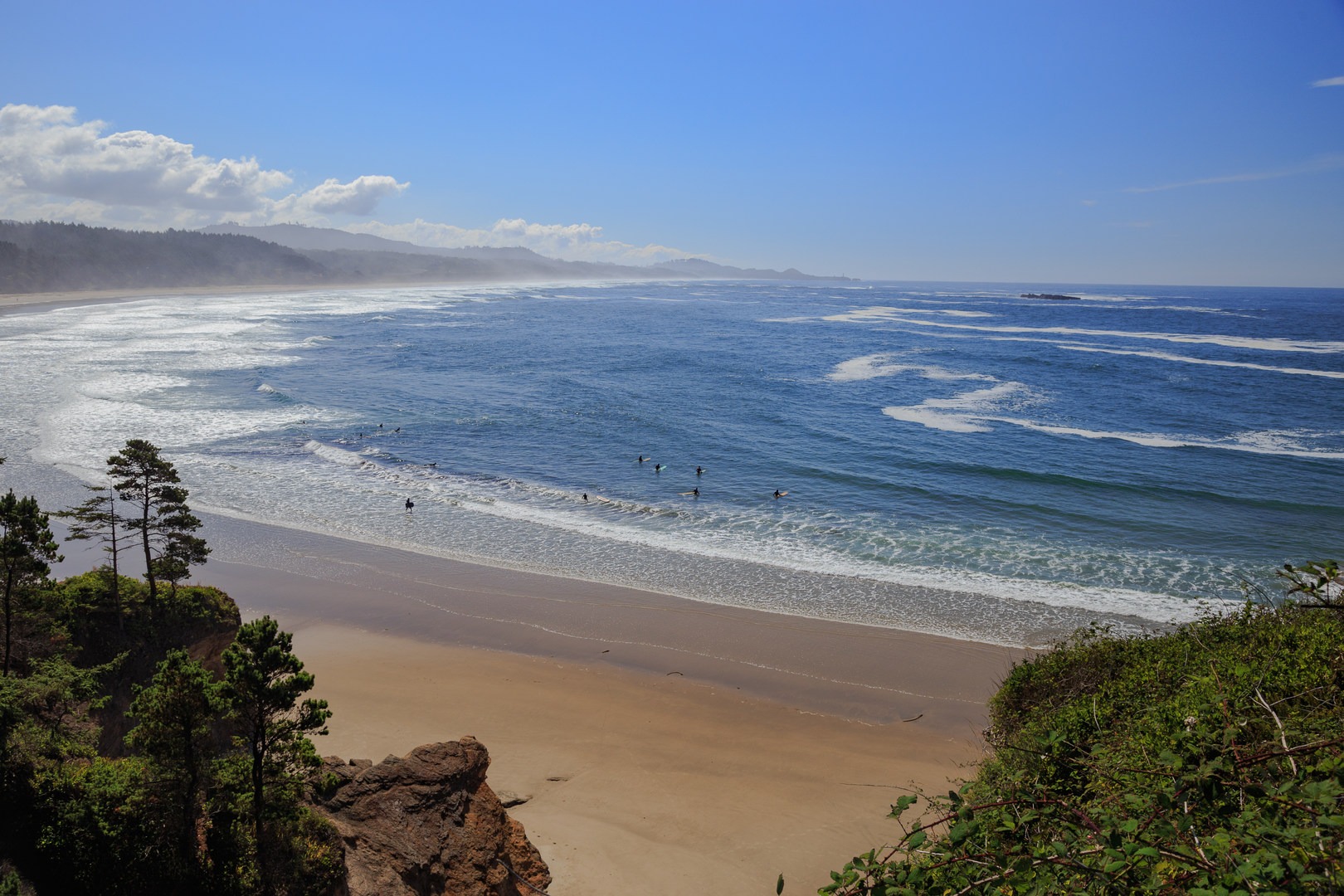



















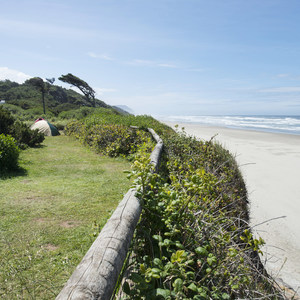
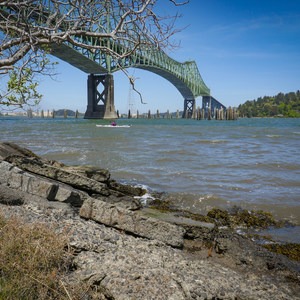
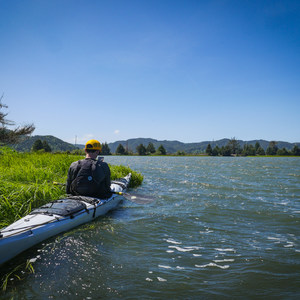
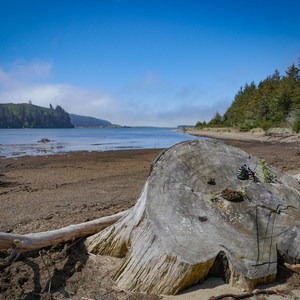
Comments
Sign In and share them.